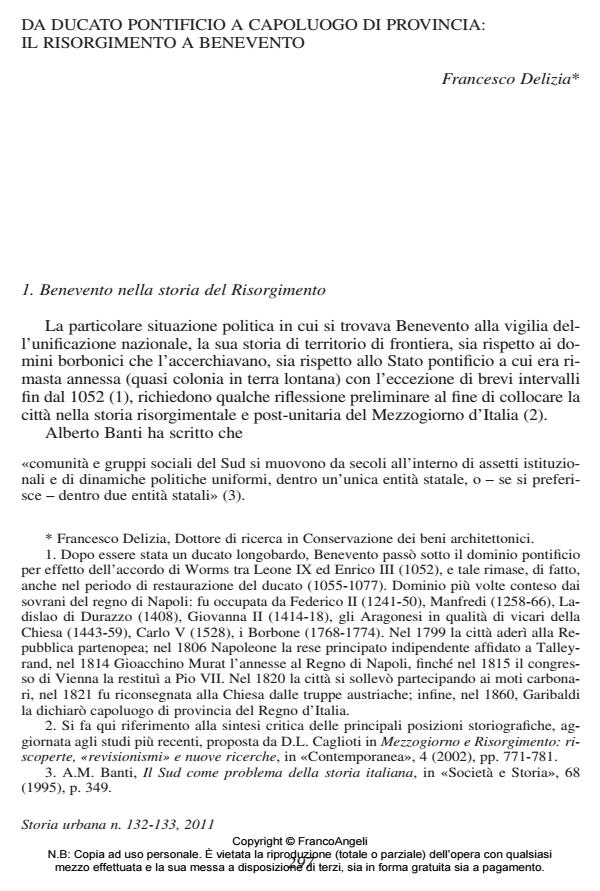Da ducato pontificio a capoluogo di provincia: il Risorgimento a Benevento
Journal title STORIA URBANA
Author/s Francesco Delizia
Publishing Year 2012 Issue 2011/132
Language Italian Pages 26 P. 297-322 File size 7262 KB
DOI 10.3280/SU2011-132011
DOI is like a bar code for intellectual property: to have more infomation
click here
Below, you can see the article first page
If you want to buy this article in PDF format, you can do it, following the instructions to buy download credits

FrancoAngeli is member of Publishers International Linking Association, Inc (PILA), a not-for-profit association which run the CrossRef service enabling links to and from online scholarly content.
Garibaldi did not pass by Benevento. Nevertheless, the city had such an important role in Garibaldi’s conquest of Southern Italy that the "Hero of the two worlds" himself, acknowledged as the capital of the province. In the years which followed annexation to Italy, and the assignment of the role of the capital of the province, the main commitment of local authorities was to define the new territorial structure of the city, locked, until that moment, within the medieval city walls; a perimeter - which had also become the border of urban space and functions - that had been strengthened by the natural site of the city closed between two rivers. The main concern of local authorities, temporary Government at the beginning and moderate groups of old aristocracy and land owners later, was to define and consolidate the new territorial organization, in addition to controlling the hotbed of disorders which spread throughout in the province. In this situation, social issues, the big topic of 19th century urban planning and the needs of the city were left aside in favour of some un-programmed choices in public investments. In the scene of urban transformations, only a small number of monuments to celebrate the protagonists of the Risorgimento were erected.
Keywords: Benevento - Risorgimento - Local interests - Urban Transformations
Francesco Delizia, Da ducato pontificio a capoluogo di provincia: il Risorgimento a Benevento in "STORIA URBANA " 132/2011, pp 297-322, DOI: 10.3280/SU2011-132011